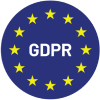Why every word counts in customer service
Customer service upholds brand loyalty and customer retention, sometimes when other touchpoints misfire. Your customers are extra sensitive to voice tones, intonations, and other language signals in conversations with support agents online, offline, and even when interacting with chatbots.
The best customer service quotes for employees come from careful word choice and employee training to use their language and subtle communication techniques as engagement assets. It significantly impacts customers’ perceptions and your effectiveness in defusing negative, emotionally charged situations that inevitably occur. In short, it will go a long way toward reducing churn, creating trust, and establishing brand ambassadorship while simultaneously pouring cold water on hot tempers that can quickly race out of control.
This article offers customer service motivational phrase dos and don’ts with proven success in several customer/employee interactions across multiple industries. You will see from this how language conveys a sense of empathy and willingness to help, clarifies customers’ concerns, and resolves them with on-the-spot solutions. It also demonstrates how agents’ verbal interactions help customers to feel understood and valued, leaving a lasting impression that fosters brand loyalty.
16 phrases guaranteed to win over unsure or disgruntled customers
You want positive vibes to drive conversations between agents and your customers 24/7/365, no matter the circumstances, pressures, or stress that initiated the interaction. These customer service phrases will help you address problematic occurrences and upgrade your conversations.
Customer service inspirational quotes (phrases) to use:
A: EARLY-STAGE CONVERSATION
The following are simple things to say to customers at work as you connect with
1. A staple opener
“Good morning, the (Company name) support team at your service.”
The words “support” and “service” in the same sentence communicate your mission in no uncertain terms. It merges quickly into (b) below.
2. The classic opener
“How may I assist you today?”
This conveys professionalism, a little formality, and politeness – cornerstones of a responsible brand intent on keeping its customers onside. The chances are high that the customer will raise the pain points early in the conversation by asking a question or outlining the problem. If a question:
3. A complimentary response
“That’s a great question…”
Followed by your answer, or if you’re unsure of an adequate response, you go to the next suggestion.
4. Creating time to collect your thoughts
“Can I place you on a brief hold?”
The last thing you want is callers complaining about your lack of knowledge. This question slows the pace down to provide essential accuracy.
5. Demonstrate that you’re focused single-mindedly on the customers’ pain points
“Thanks for your excellent explanation.”
When you say this, customers’ thoughts of “having to hurry on” leave the stage. Also, it shows that the agent is a good listener, establishing a great backdrop when the issues are complex. It also prepares a platform to gather the relevant data methodically before resolution.
It ties in with your next statement where you…
6. Ensure you and the customer are on the same page
“Do I have this right? The reason for your call today is [paraphrase the issue].”
There’s no point in trying to resolve pain points if they are murky and confusing to the agent. This question is pivotal in doing that for you.
B: BRINGING DOWN THE TEMPERATURE WHEN A CUSTOMER’S UPSET
Stressed customers experiencing a brand malfunction show frustration, upset, or anger through voice tone/language/intonations and context in messages, reviews, and live chats. Trained agents and the latest AI algorithms pick up on this quickly. It signals that a shift to empathy will quell the chances of things escalating out of control and worsening the negativity. Here are phrases that will help turn a severe pain point into a five-star rating for the brand:
7. The classic empathizer
“I can see how frustrated this has made you.”
From the get-go, the customer knows they’re interacting with a company employee with empathy who has experienced something similar and is prepared to find a solution.
8. A recognition empathizer
“Thanks for telling us about this and the stress it has caused you. We really appreciate it when observant clients bring pain points to our attention.”
There’s no better phrase than this to express the brand’s gratitude and simultaneously commend the customers on their astuteness. It’s frequently a turning point in the conversation, a great response that shows you’re ready to end the latter’s pent-up frustration.
9. The apology empathizer
“I’m sorry you’re going through this. Your stress is completely understandable,” OR “That would also frustrate me.”
This does wonders in toning down heated situations and converting uncomfortable circumstances into a positive experience. This phrase conveys personalized empathy, compassion, and assurance, working together to derive a mutually acceptable solution. It establishes that the complaint is not frivolous, and the company culture includes a willingness to learn from brand errors to put the customer experience back on track.
C: OFFERING SOLUTIONS
Customers’ primary goal is to derive a solution when interacting with you. After all the foreplay above, the crux of the matter to your callers is, “Take this pain point off my shoulders.” It’s not always as simple as 1-2-3 done! In other cases, it is. Here are some phrases to help you satisfy a customer no matter how simple or complex the issue is:
10. The fixer
“I will make sure this gets resolved quickly.”
When you say this, it assures your customer that a solution is at hand and your agent is pulling out all the stops to make it happen. It will create a relief that they’re under the care of a person who has the power to create customer satisfaction.
11. The placator
“We can’t do that, but here’s what we can do.”
This response recognizes that flatly denying a customer’s request without providing an option seldom goes down well. It leaves the caller floundering for a solution when they expect you to have one. It may not be their visualized outcome, but a consultation route is better than nothing, even if not ideal.
Talking alternatives, you can take this down several paths. For example:
12. The placator, version 2
“How about this: If you (state activity), we will (state activity).”
A frustrated customer wants to leave the call with the problem solved and nothing more to do. However, when that’s impossible, this phrase leads them gently into less palatable news, showing them that one more action will get them across the finish line.
13. A valuing-your-input closer
“Your feedback is insightful; our team will surely consider it in the future.”
This retort assures customers they have a voice in framing the brand’s culture. When your customers feel their recommendations don’t end with the call or will network with the team, it adds significant substance to the interaction.
D: ENDING THE CALL
Wrapping up the call is a skill all on its own. Remember, time is money, so you don’t want to waste it. Simultaneously, you don’t want the customer to feel you’re rushing things or creating unnecessary pressure to move to the next caller. Here are a few great conversation “enders.”
14. The optimistic expectation
“Expect us to get back to you on this no later than (date and time).”
Customers love knowing you’re taking responsibility with action that’ll lead to a resolution. Pinpointing a date and time creates a less intense scenario around the issue. Why? It indicates commitment, a sense of urgency, and a willingness to put a resolution on the clock. All are brand promotion qualities.
15. The we’re-behind-you-all-the-way closer
“Is there anything else I can help you with today?”
In other words, our service is comprehensive and includes much more than the issue the customer has raised. It invites them to reconnect without fear or obligation, emphasizing that’s what you’re here for. It’s a few words that say a lot!
16. The escalator
“Are you okay for me to transfer you to our specialist agent to resolve this for you?” Follow this up with:
“I’ll stay with you until you’re connected.”
Passing the buck to another extension (without assurance it will go to the intended agent) or too quickly without sincerely trying to answer all the caller’s questions is a massive customer peeve. Still, there are no two ways about it, and expanded advice is frequently essential. Merging into it must be gentle and assuring; these combined phrases will do it for you.
Some evergreen word-strings that fit in everywhere:
Positivity is a vital ingredient in your customer interactions. Here are terms that fit the bill perfectly in every situation above:
1. Messaging gratitude.
- “I appreciate that.”
- “Thank you for your brand support.”
2. Conveying a “no doubt about it” tone of confidence, loaded with positivity:
- “Absolutely!”
- “Definitely!”
Negative, demotivating phrases to avoid:
1. “I don’t know.” Indicates technical inability, disinterest, and a dead end with the problem still unresolved or going in the wrong direction.
Better, pulling from the above list:
- “That’s a great question! Can I place you on a brief hold to get you an answer?
- “We can’t do that, but here’s what we can do.”
2. “That’s not my job,” or “I can’t,” or “I’m not the best person to help with that issue.” The worst things you can say under any circumstances. It’ll likely kill the sale or churn the customer, denoting in no uncertain terms you could care less.
Better: Lead the conversation to end with “Are you okay for me to transfer you to our specialist agent to resolve this for you?”
3. “Did you not hear what I said?” or “You misheard me!” It implies customer stupidity; it’s as simple as that. Use these words if you want to convert loyalty into churn.
Better: “Sorry for the misunderstanding. Please let me re-explain.”
4. “Actually,” or “No,” or “Calm Down.” Filler words that come across as condescending (“Actually” and “Calm Down”) or create a sense of finality that this is going no further with us (“No”). Erase them from your customer conversations.
5. “What else do you need?” This is the one phrase that conveys impatience and rushing the customer to get off the call.
Better: “Is there anything else I can help you with today?”
Conclusion
These tips for simple responses to customers’ questions will foster their loyalty, engage them better, and prevent unnecessary frustration. We understand customer psychographics better than most, and it tells in our call center formats, survey frameworks, and employee training protocols. We show you how to avoid jargon, be mindful of sentence structure, and stay in touch with customer receptiveness. Contact us today for a no-obligation discussion about your customer interaction ideas and initiatives.
FAQs
1. What are the three simple phrase categories when interacting with customers?
A:
- Early conversation stages.
- Bringing the temperature down.
- Offer solutions.
- End the call.
2. Why do simple things to say to customers at work create customer loyalty?
A: They avoid all the wrong terms and optimize the best customer service quotes for employees to keep the CX on track without being verbose.
3. Why is it vital to define customer service motivational quotes?
A: Your trained agents must be linguistically and thoughtfully ready to deal with customers engagingly.
4. What are the most condescending terms you can use when engaging customers?
A: “Actually” or “Calm down.”
5. What are the worst terms you can use when engaging customers?
A: “No” or “I can’t.”














